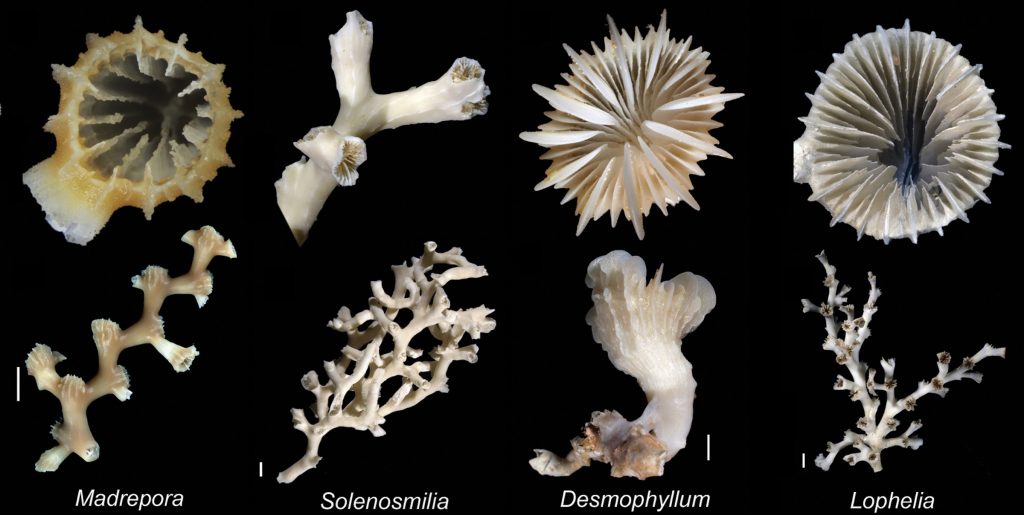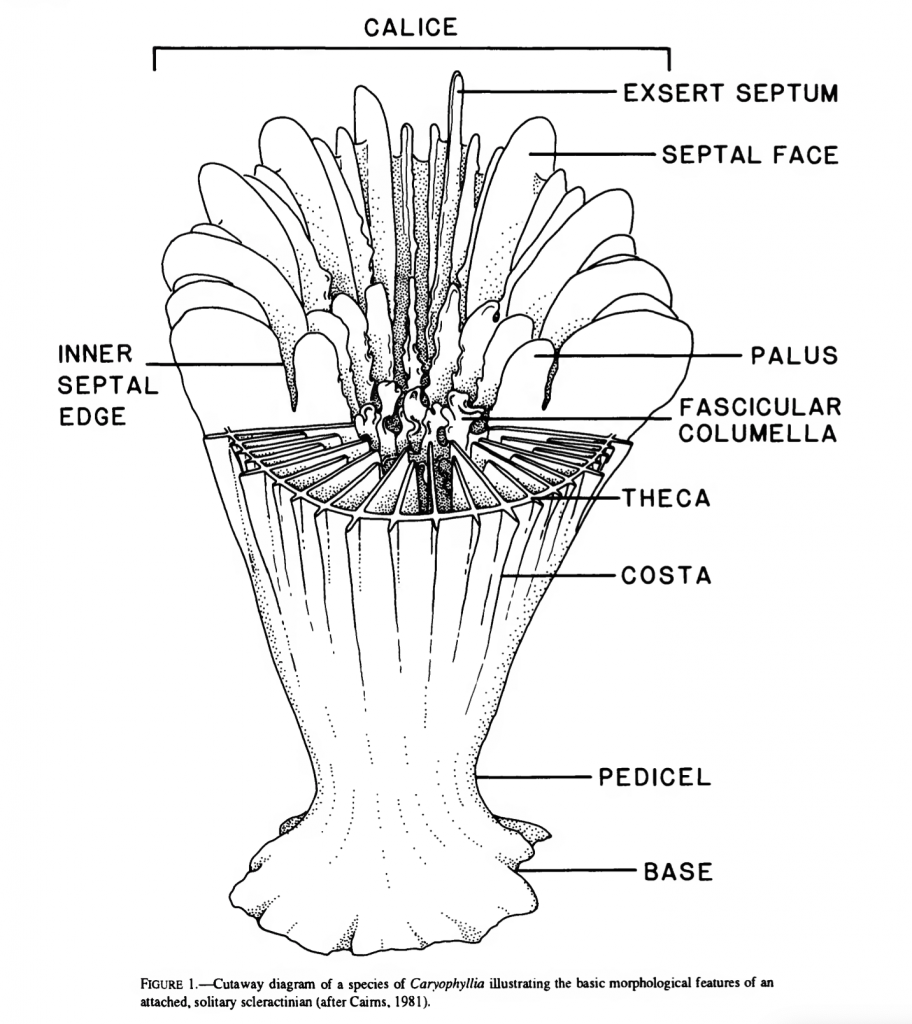
In Irish waters, we commonly encounter three reef building stony coral species, and a fourth that contributes to reef integrity. On first glance, they look pretty similar – the photographs below are from a paper by Stephen Cairns, who is a, if not, the world expert on scleractinian corals. You can find the full paper here. I’ve modified the photos, bringing the four Irish species onto the one picture. Notice the scale bars. Each white bar represents 5 mm in the bottom photo. The top photo each time is just a blow up of the corallite.
You can see straight away that one of the four taxa, Desmophyllum, is much larger. That’s an easy spot, and it’s the species that contributes to reef integrity but doesn’t build reefs itself. The other three are similar sized, but they are reasonably easy to tell apart with practice. Madrepora is zig-zag shaped. The branching of Lophelia is V-shaped, while the branching of Solenosmilia is softer and less angular than either of the other species. We sometimes just refer to these four corals by their genus names (since we seemed to have a single species in each genus in Ireland) but we should use their full names: Madrepora oculata, Lophelia pertusa, Solenosmilia variabilis, and Desmophyllum dianthus. In fact, we need to start using their full names, because a recent paper showed that Lophelia pertusa is in the wrong genus, and it should properly be called Desmophyllum pertusum. So, in fact, we have two species of Desmophyllum in Irish waters, and no species of Lophelia.
We’re lucky that we can tell all the species apart based on gross morphology, because it means we can distinguish them easily on video taken with ROVs. It saves us from having to study corallite morphology in great detail. However, it is very useful to be able to talk about the finer points of a coral – and for that we need specialised terms and language. The figure below is from another Stephen Cairns paper and shows the basic structure of a corallite.

As you can see, the labels are all words with Latin roots. Sometimes, it really does look like scientists are speaking a different language, but actually once you know the terms, the language is easy. Explanations below:
- Corallum – the entire skeleton of a coral
- Corallite – the skeleton produced by a single polyp
- Calyx (or calice, plural calices) – the concave inner part of the corallite that houses the fleshy polyp
- Theca – the outer wall of the corallite
- Septum – skeletal plates that radiate into the calyx from the wall. The adjective is septal. An ‘exsert septum’ is just one that is sticking out the top. The septal face is the flat bit.
- Costa (literally ribs) are where septa radiate through the wall.
- Fascicular columella is a term that describes the way the septa meet in the middle
- Palus (plural pali) is an inner plate that is interior to a septum.
- Pedicel is the stalk
- Base is the base!
The video above shows a bed of Lophelia pertusa (or rather Desmophyllum pertusum) in Irish waters around 800 m depth. Note the two colour morphs – white and orange – they are both the same species. You can easily see how these reefs create habitat for smaller organisms and why they are so important to deep-sea biodiversity. The video was taken with ROV Holland I deployed from RV Celtic Explorer during my research expedition in 2017.